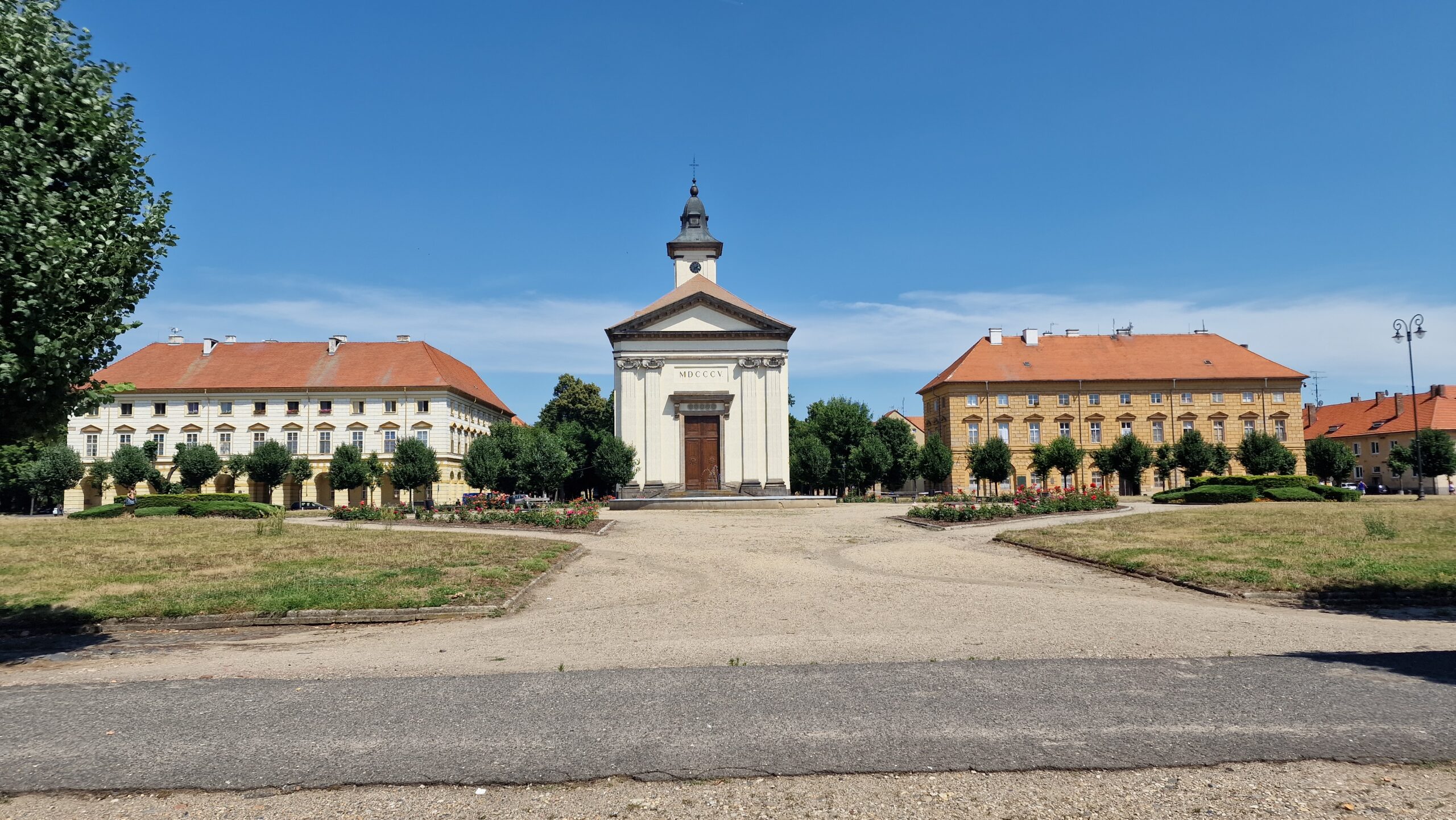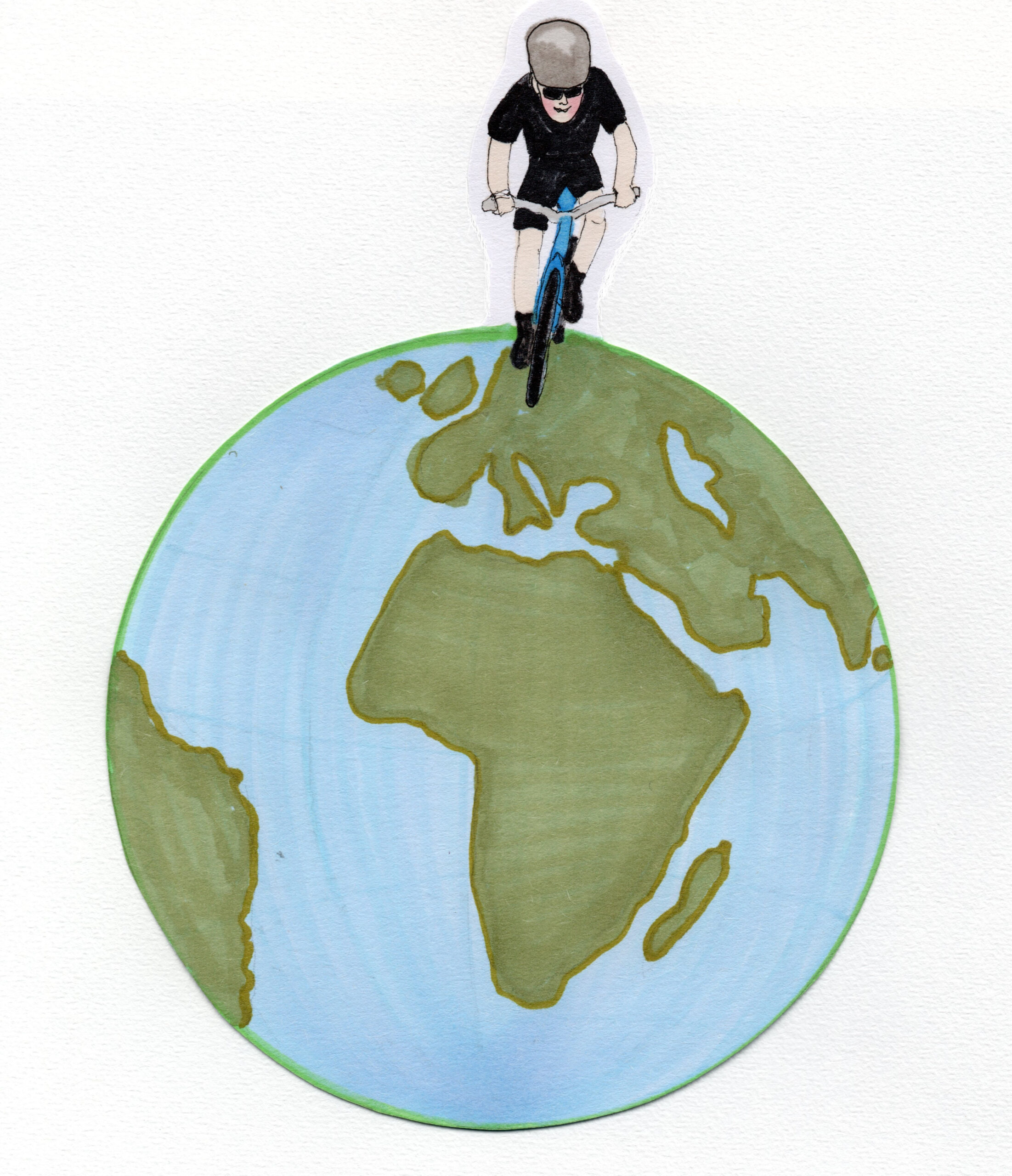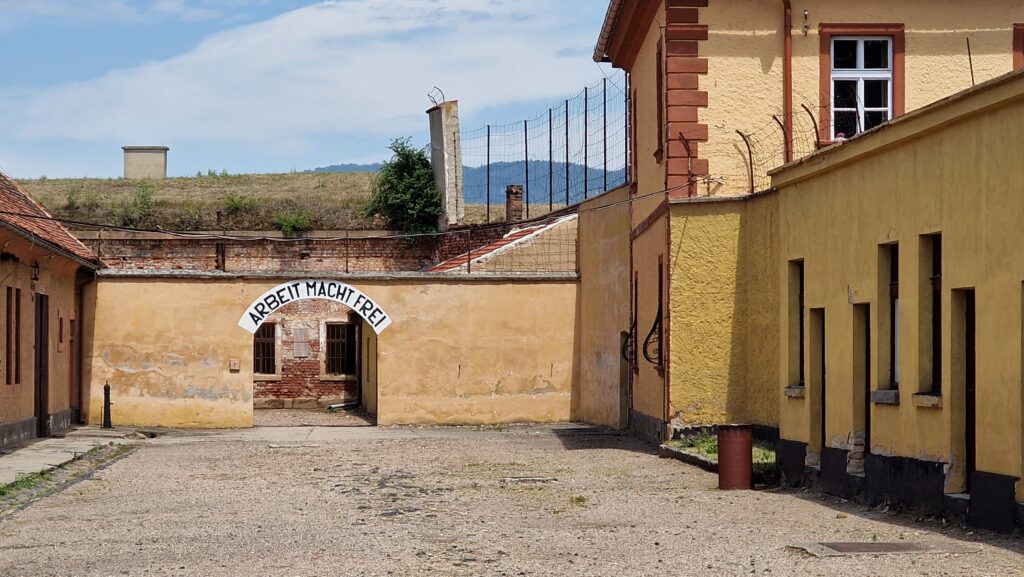Day 58 of my cycling journey – June 27, 2022
After a horrendously noisy morning I got early on my bike, but the day proofed to be challenging in more than one way. Visiting the Theresienstadt Ghetto and concentration camp, I cycled 36 kilometres before the intense heat and a quickly approaching thunderstorm forced me to capitulate and leave my cycling plans for another day.
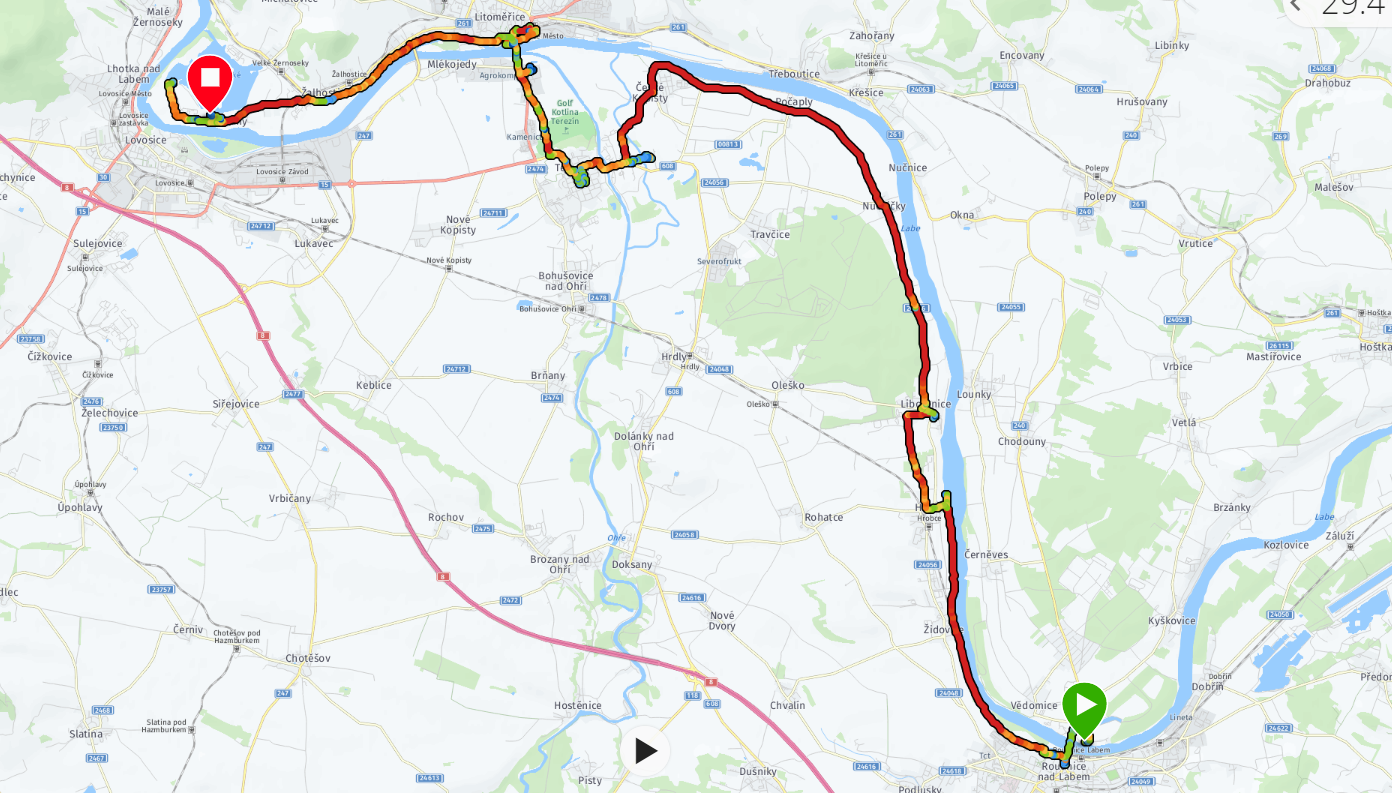
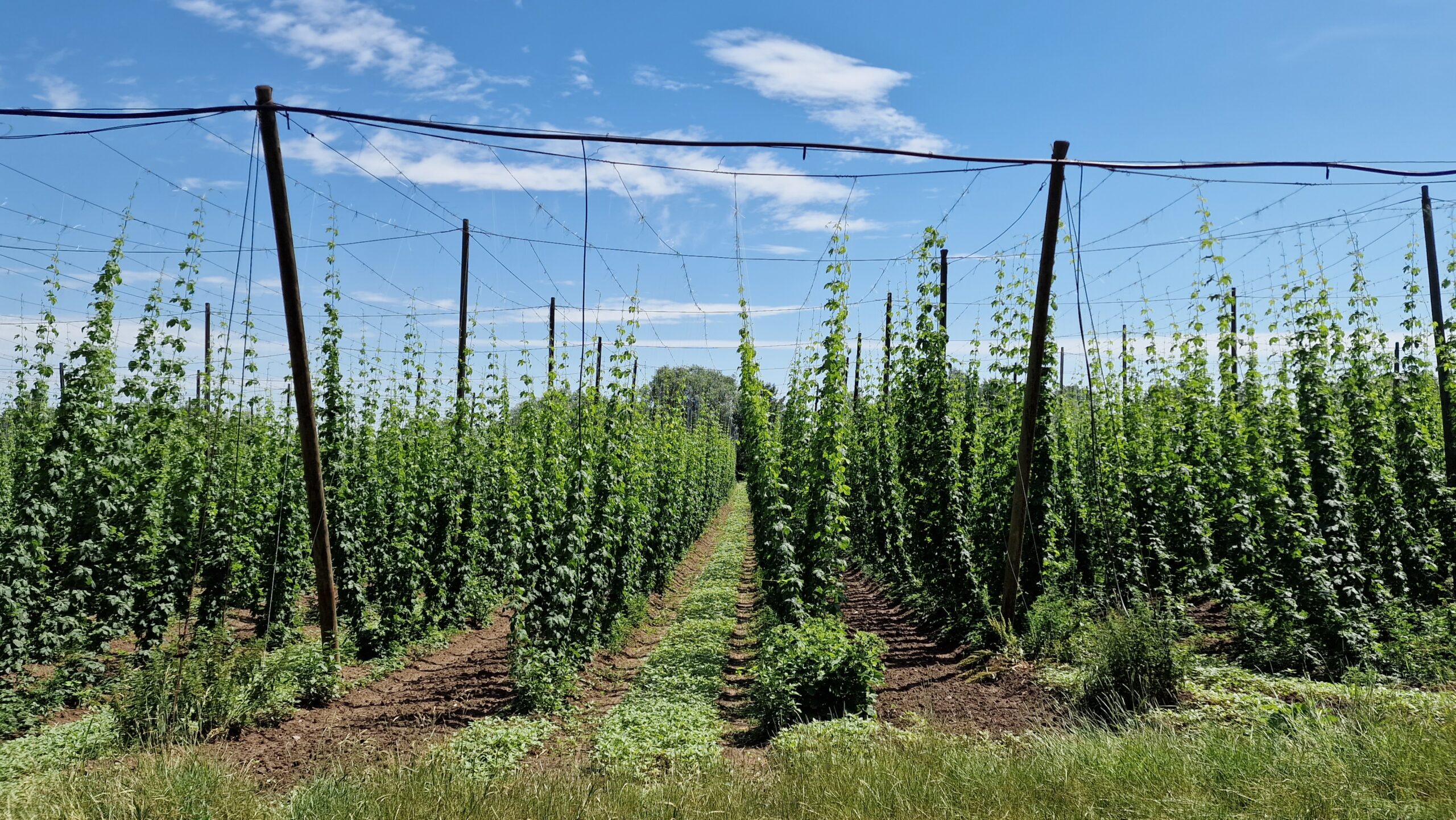
I was ripped out of my dreams at 05:00 o’clock in the morning when a horrendously loud screeching penetrated my inner ear and went directly into my central nervous system. It responded very instantly by ordering my body to jump up into a sitting position. After the horrible screeching, a metallic voice on a loudspeaker made some incomprehensible announcements in Czech, and that is when I identified the noise and realized I had been sleeping next to a railway station and that the morning rush hour of commuters had started. My body slumped back into a lying position, and I tried to sleep another round, but the screeching and the incomprehensible metallic voice announcing trains and destinations continued in regular intervals of 20-30 minutes. I was wondering how I could have missed that on the other side of the river, directly on the Elbe banks, was the train station of the town. The sound from the trains traversed without obstacles the water and went directly into my tent, inner ear and thus my brain. There was no delaying the inevitable, I had to get up. Having my breakfast and writing some diary entries kept me busy until I continued my cycling.
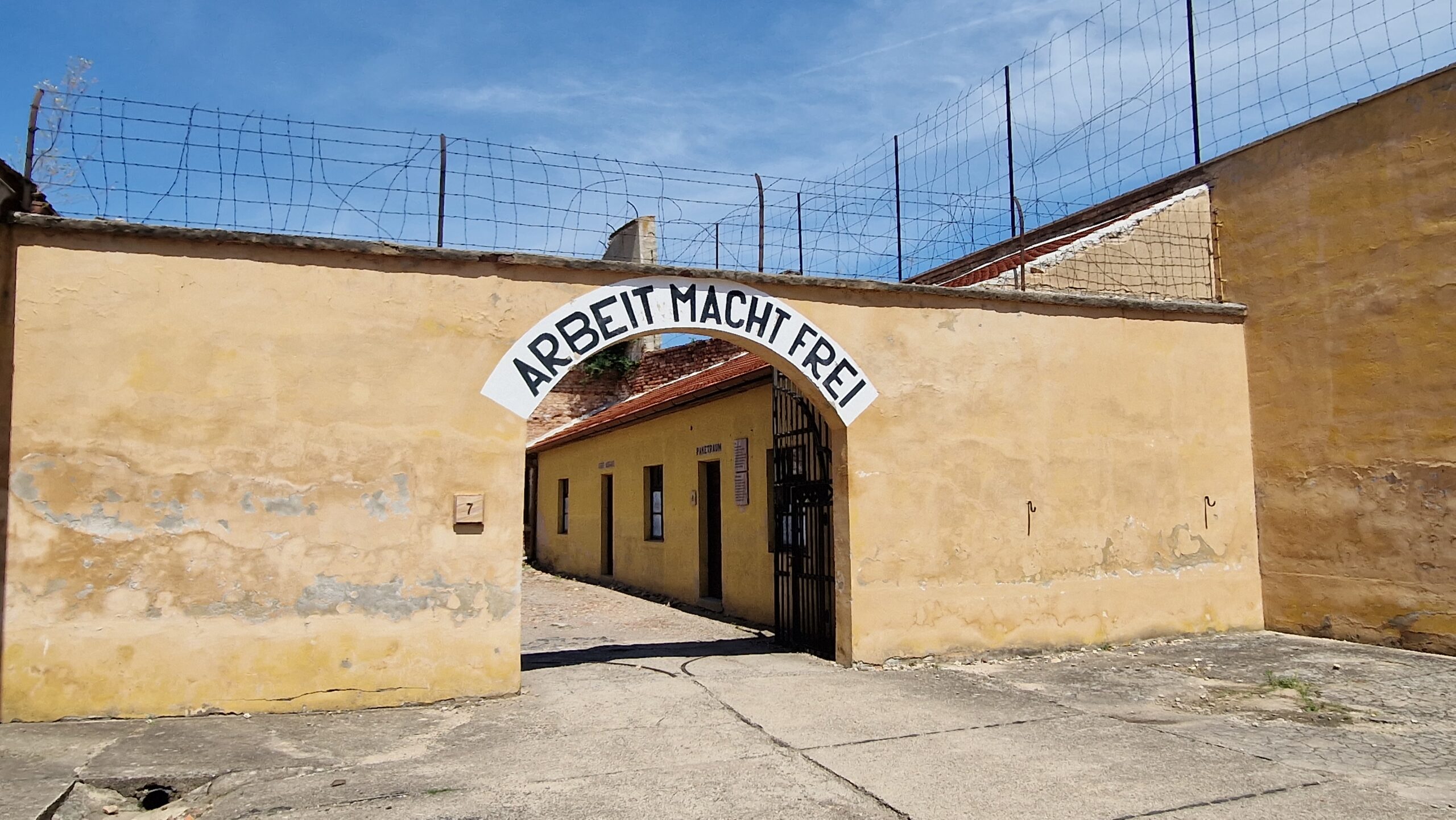
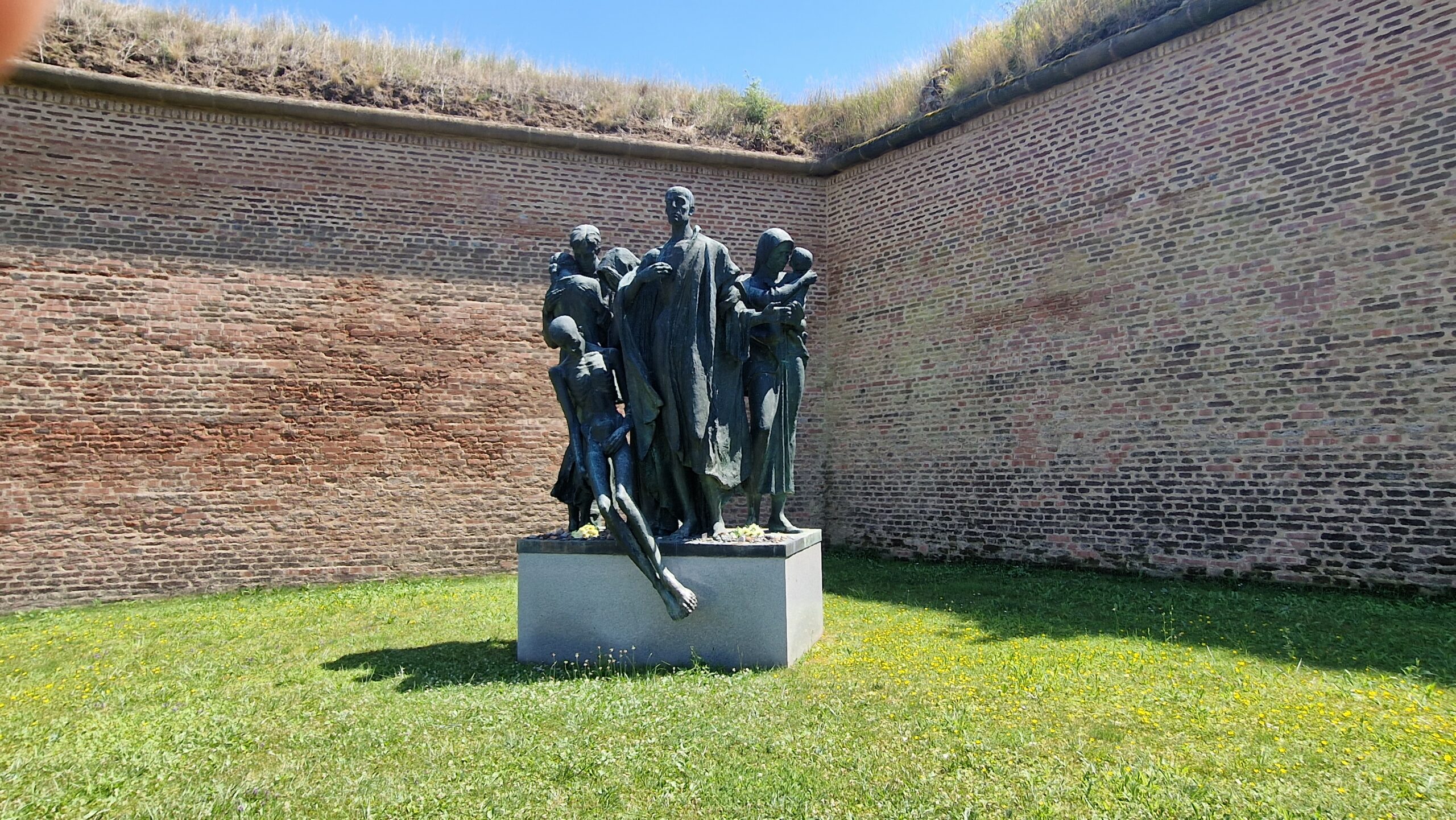
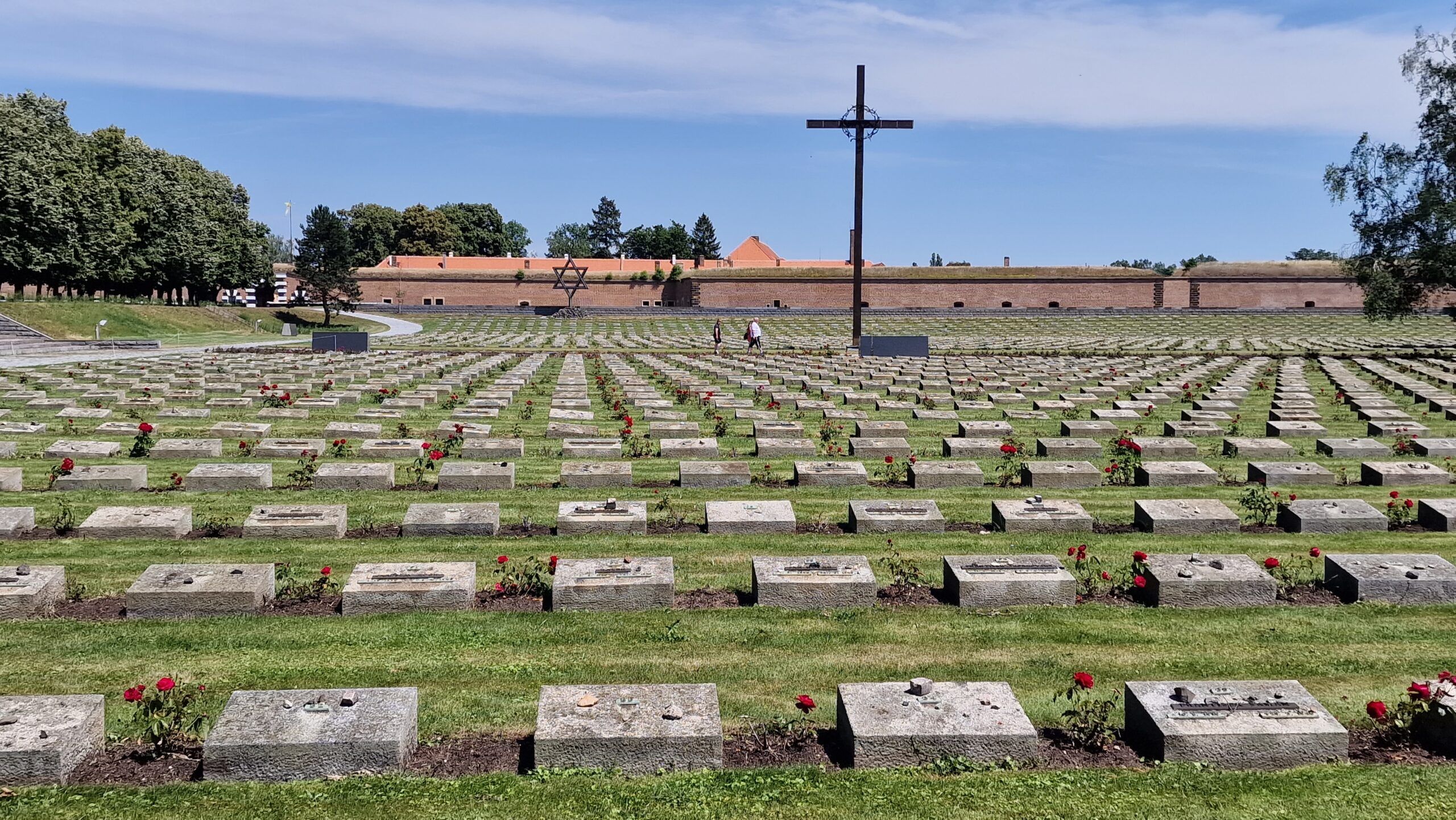
I had planned to reach the German border on this day which was about 100 km to the north-west. The morning cycling was as good as ever. Along the Elbe cycleway, I progressed well along the shady paths along the riverbanks. But it was getting hot, real hot. The temperatures on my cycle computer reached 35 C in the shade and I had to make little breaks in increasing intervals in order to drink and cool down a bit. After a while I had to follow the cycleway inland, and now it got almost unbearably hot when I cycled through endless hop gardens. There was no shade anywhere and I believed that the increasing sun and heat will be one of my major cycling obstacles over many months to come. After a while I reached the town of Terezin, which is much better known by its German name “Theresienstadt”. It was built as a fortress, a small fortress and a big one, and this fortresses had the purpose to protect the Austrian domains against Prussian invasions in the 18th and 19th century. When the Prussians didn’t materialize the fortresses went the ways many fortresses go when not in use – it became a prison. Because logically, if it is difficult to get in it is also difficult to get out. Subsequently, the Austrian emperors used the small fortress as their preferred place to lock up anybody who didn’t share their own enthusiasm about their “God-given” right to rule by divine power and into a greater Austria. The most famous of its inmates being Gavrilo Princip, the Serbian nationalist who assassinated the Archduke Franz Ferdinand, and thus started WW I.
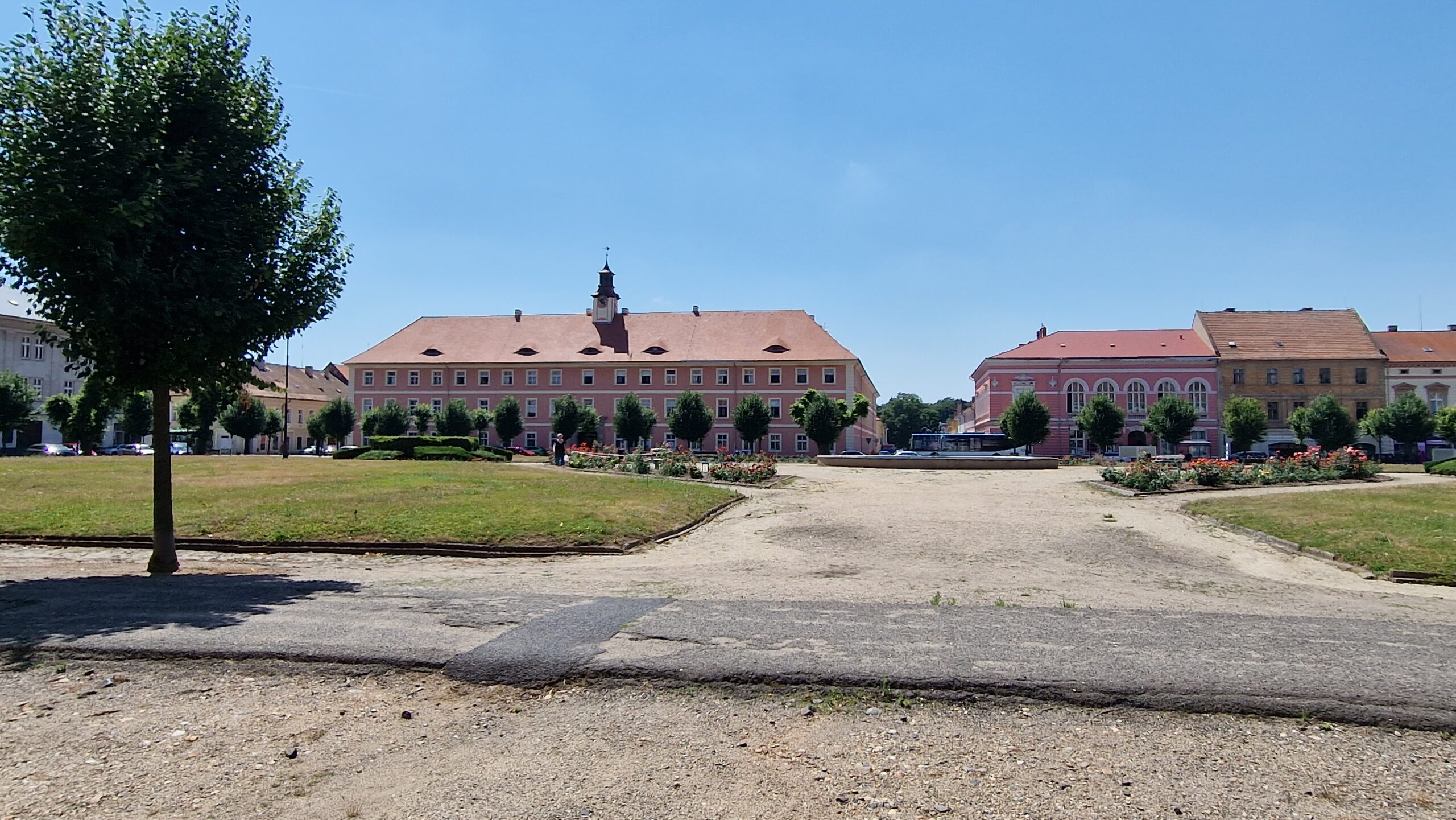
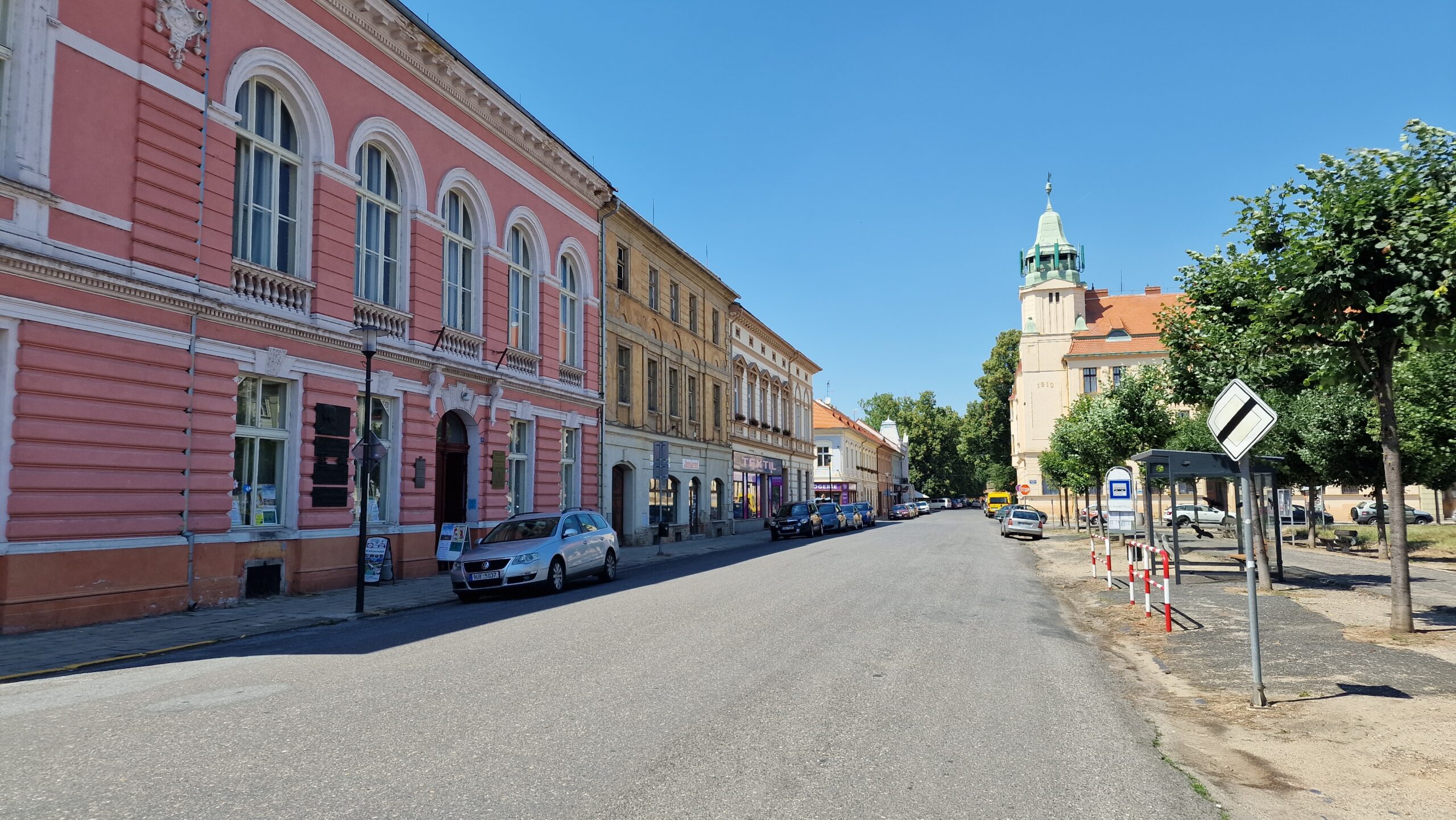
WW II and the Nazi rule saw Theresienstadt transformed into one of the most infamous places. The small fortress, which served earlier as a prison, was “upgraded” to a concentration camp for all kind of opponents of the Nazi regime, while the town in the big fortress became the infamous “Theresienstadt Ghetto”, an initial collection location for more prominent Jews from Western Europe. It pains me to write this, but it served as a logistical centre until it was decided to which extermination camp its inmates would be sent. Because Theresienstadt Ghetto was extremely crowded, many interned Jews did not survive this place and many of them died from diseases and hunger. It also served as one of the Nazi propaganda locations and in 1944 an International Committee of the Red Cross and Danish delegation was completely duped. After a complete makeover and “beautification” of the Theresienstadt town and a very selective tour around the ghetto with predetermined “contacts” with selected inhabitants, the delegation concluded that everything was fine and that the inhabitants did live a slightly better life than normal country inhabitants in the area. Sometimes it is difficult to understand history and the gullibility of man.
After visiting the concentration camp and ghetto, I continued and fought even harder to continue in the sizzling heat. I saw, however, that the sky was getting dangerously dark. A thunderstorm cell developed rapidly and threateningly. Luckily the near town of Pistany had a campground near a lake and I was able to seek shelter there. Setting up my tent before the thunderstorm erupted I spent all afternoon under a roof to watch the storm progress and finally blow itself out. I had cycled 36 km on this day and seen the silent witnesses of human suffering and cruelty. It was time to call it a day.
